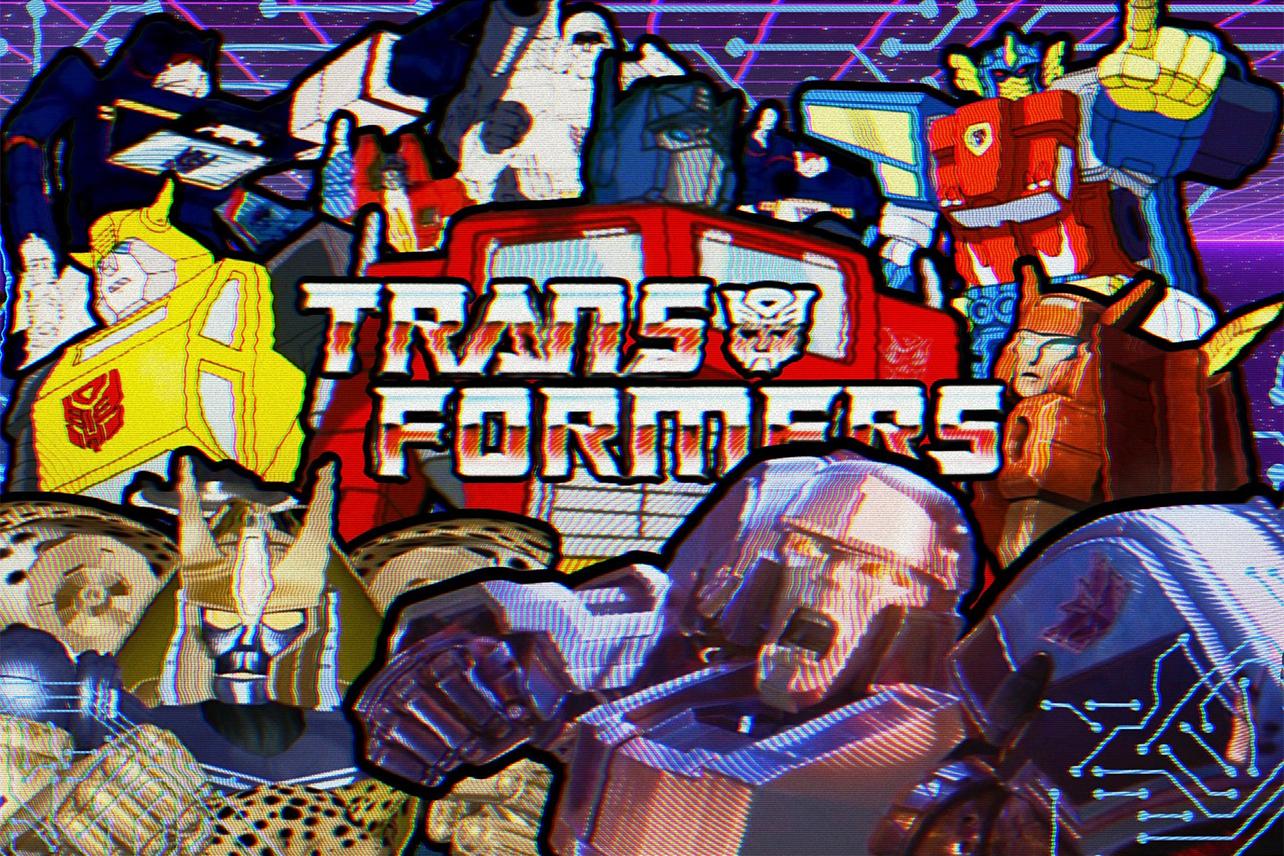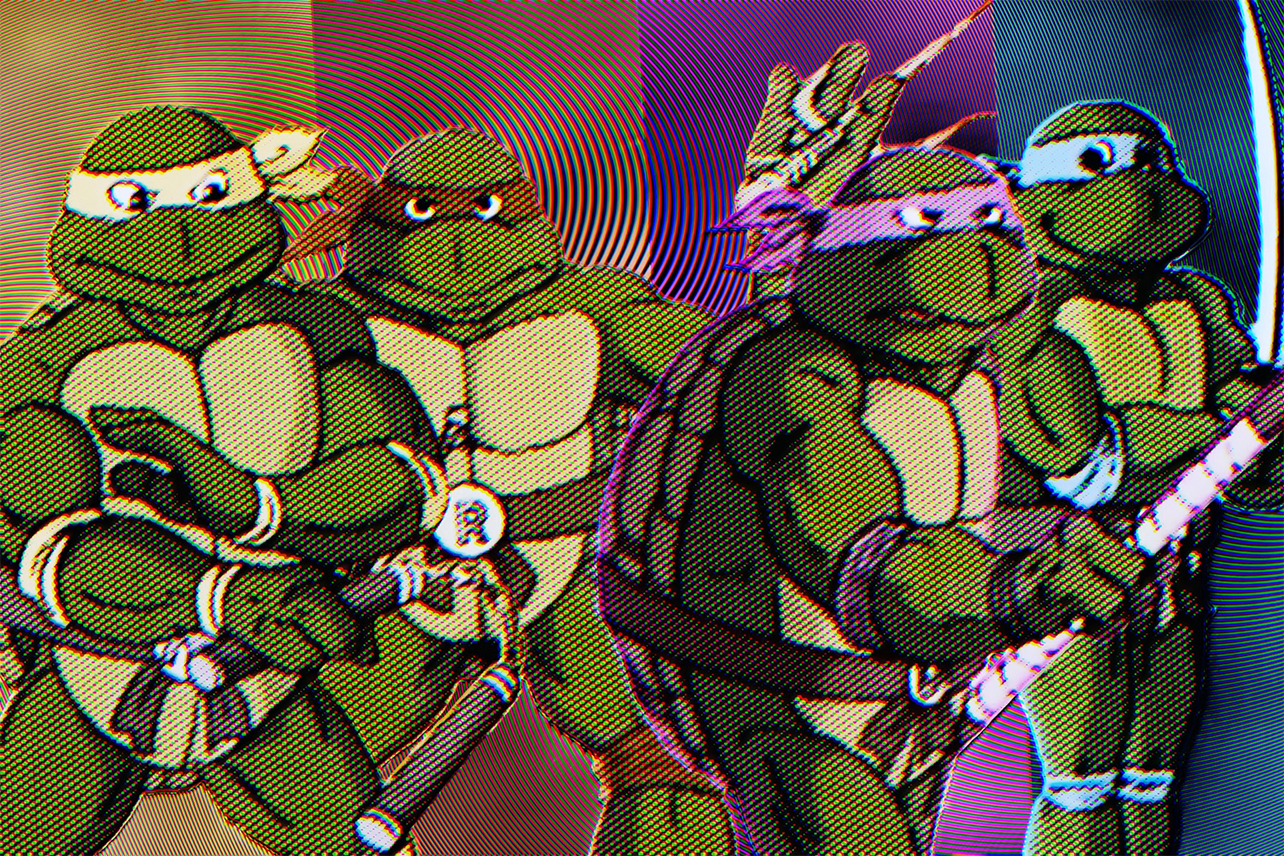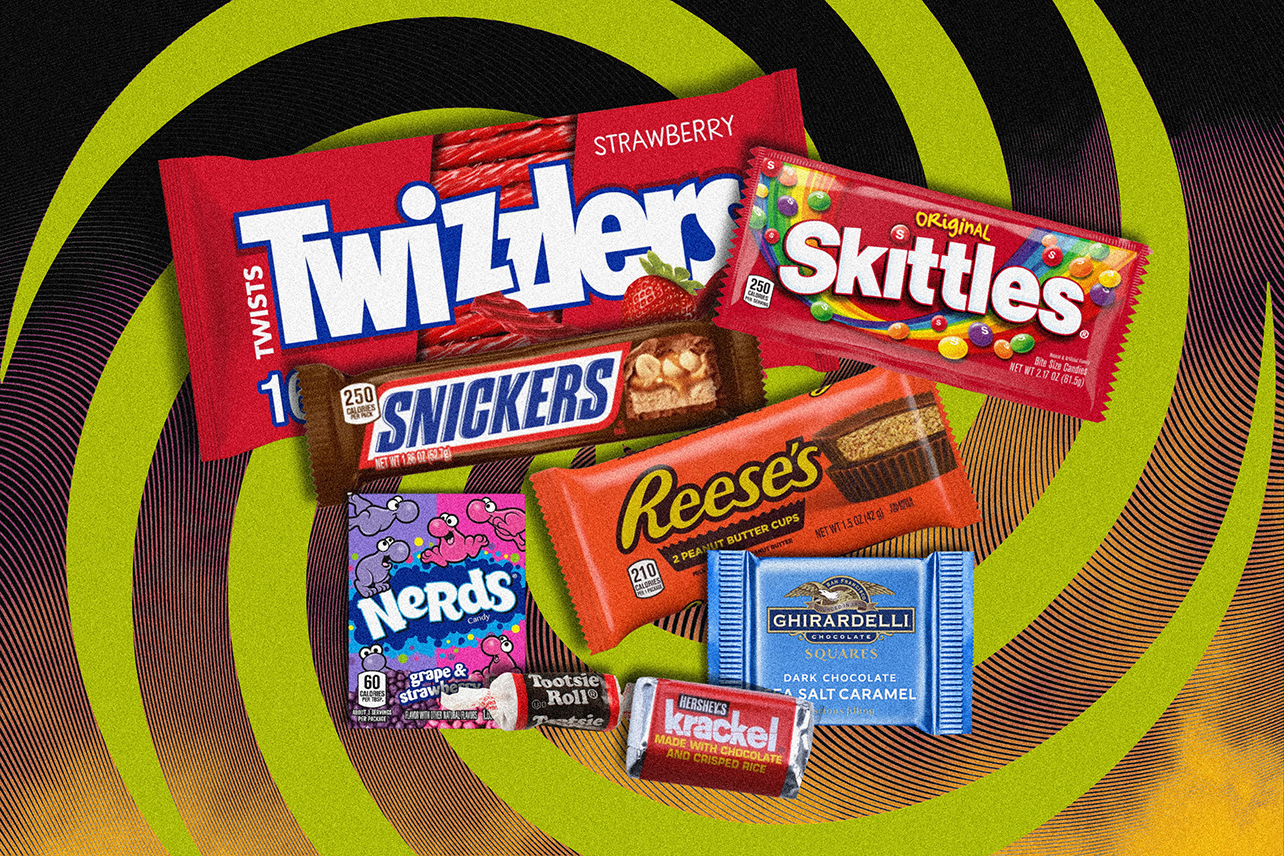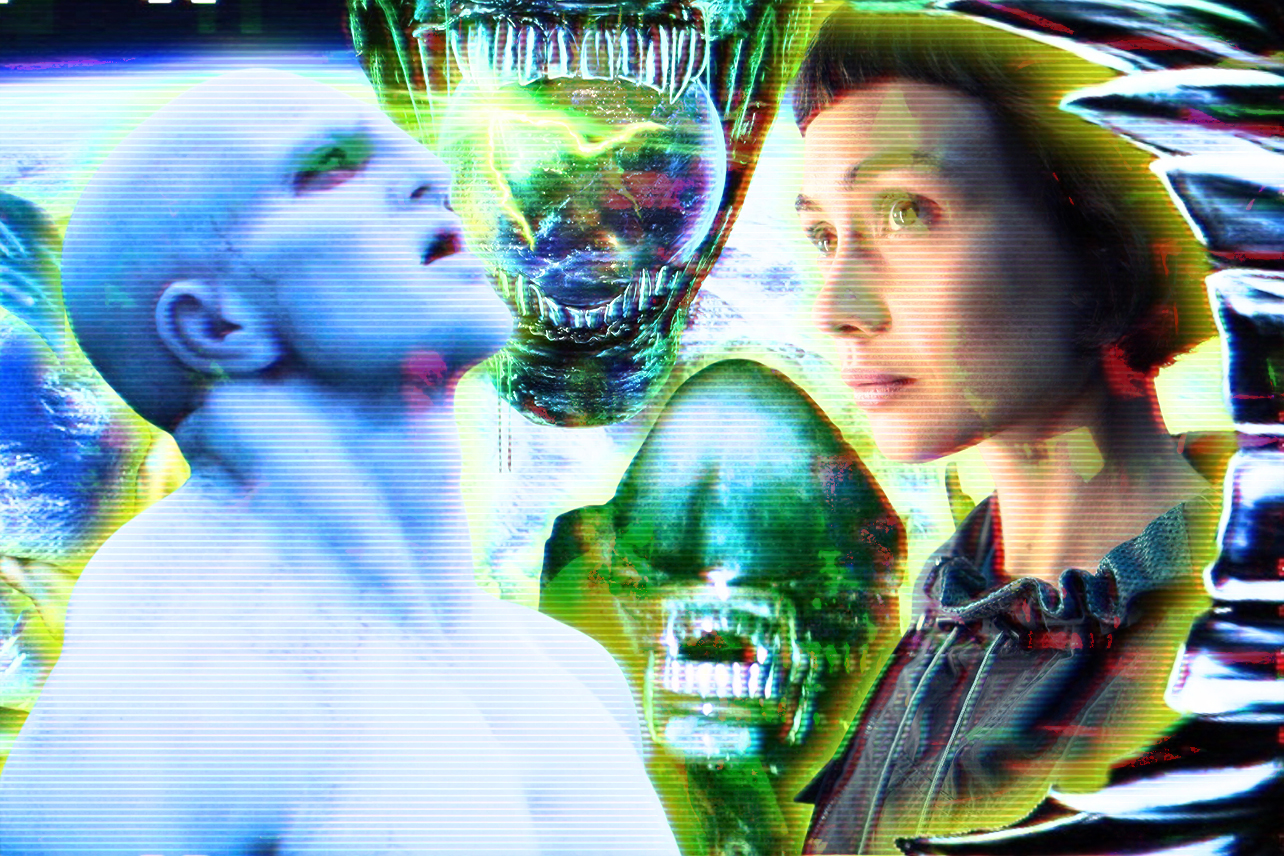Our Heist Guides introduce new fans to something we think is seriously cool, and they may even provide some behind-the-scenes knowledge to longtime diehards. It's everything you need to know to plan your own heist.
If there was one winner in the 1980s battle for toy supremacy, it has to be The Transformers. After all, what other 40-year-old toy line can boast 28 TV series, multiple video games, and a movie line that's raked in over 5.28 billion dollars? And all while still selling toys to today's kids? I'll give you a hint: It ain't "Sectaurs."
In fact, Transformers are so popular that it's become the generic name for any type of robot toy, as some of us who are old enough to have gotten Gobots might still be bitter about. But with so many tons of Transformers out there, how can a newbie figure out where to start? Well, that's what we're here to help you with. So let's transform and roll out read on!
What are The Transformers?
The Transformers are a line of transforming robot figures created by US toy company Hasbro and Japanese toy company Takara. Debuting in the US in 1984, the toys have inspired a wide range of merchandise and media, including comic books, manga, films, and a ton of animated TV series, many of which are completely separate from each other. Honestly, it's such a huge topic that we can barely scratch the surface with this guide.
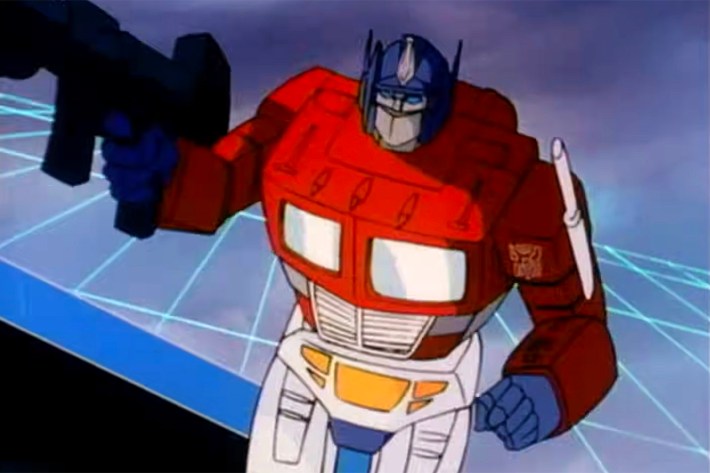
What is Transformers about?
Basically, it's about giant robots punching each other. Sometimes they turn into other things, but sometimes they don't. (I'm looking at you, Action Masters!) And occasionally humans are also there, but nobody really cares about them.
But what's the story about?
Well, the focus changes from series to series, but the original "G1" story that keeps getting retold is largely about The Transformers, a race of giant robots from the planet of Cybertron. They've been at war with each other for millions of years, with the heroic Autobots (led by Optimus Prime) and the evil Decepticons (led by Megatron). And when small groups of each faction ended up stranded on Earth, they brought their war here.
But other stories have focused on entirely different time areas, including the distant future and past. But they all pretty much feature two different groups of robots battling each other.
Where did the toys originally come from?
They actually came from Hasbro's G.I. Joe line … eventually.
Remember the original 1960's 12-inch G.I. Joe line, the one with cloth uniforms and accessories? Well, Japanese company Takara imported those figures to create the line Combat Joe. But for some reason, Japanese kids weren't that into playing with American soldier dolls, so they used the same molds to make clear plastic versions of the figures, renaming them "Henshin Cyborg"!
Incidentally, "henshin" means "to change/transform," and was popularized by the 1971 Japanese tokusatsu series Kamen Rider, where the main character shouts it every time transforms into his heroic alter ego. Nowadays, it's typically used to refer to shows where characters temporarily transform into a heroic alter-ego, like in Power Rangers or Sailor Moon. Weirdly, "henshin" is not the common Japanese word for transformation ("henkei"), but was used as the Japanese title for the Kafka novella The Metamorphosis, and the Kamen Rider producer liked the sound of it. And I promise that will be the last time I refer to Kafka in this article about giant robots punching each other.
Anywhoo, in Henshin Cyborg, the "henshin" referred to the play feature of the figures where you could swap out limbs for weapons, or even buy costumes to dress your figure up like pop culture heroes like Kamen Rider or Ultraman. The line was way more popular than the Combat Joe line and eventually led to two different Takara spin-off lines that eventually created the Transformers.
The first was Microman, a 3 ¾"- version of the Henshin Cyborg line, which would eventually be brought to the U.S. by Mego as "The Micronauts." The gimmick of these figures was that they were meant to be actual size, with each figure being a tiny alien living on Earth. As part of that gimmick, Takara introduced the Micro Change line in 1983, featuring a line of robots that turned into replicas of household objects like micro-cassettes, cameras, and guns. (Which always surprised me, because guns aren't that common in Japan.)
The other line was Diaclone, a line of smaller-scale transforming vehicles like cars, jets, and construction equipment. Many of these were meant to work with small figures who could ride inside them, which is why many of the original Transformers have empty cockpits that were never explained.
As the story goes, a Hasbro representative went to the 1983 Tokyo Toy Show where he saw both lines on display. Hasbro ended up importing both of those lines to create 1984's The Transformers, which is why the line has so many different scales of figures.
Who came up with the original characters and storyline?
Takara's Diaclone and Micro Change figures didn't have defined characters, so Hasbro teamed up with Marvel Comics to develop the Transformers storyline. Marvel editors Denny O'Neil and Jim Shooter did some of the early work on the line, but most of it was written by Bob Budiansky, who named many of them and even wrote the "tech specs" on the back of the box that defined the character's personalities. He edited, and later wrote, the US Marvel Transformers comics.
Meanwhile, Hasbro teamed up with Sunbow Productions, a division of the Griffin-Bacal advertising agency, to create a half-hour animated Transformers series to promote the toys. And while they used a lot of what Marvel developed for the series, they did make their own changes, introducing a lot of new ancillary characters that would become prominent parts of the franchise.
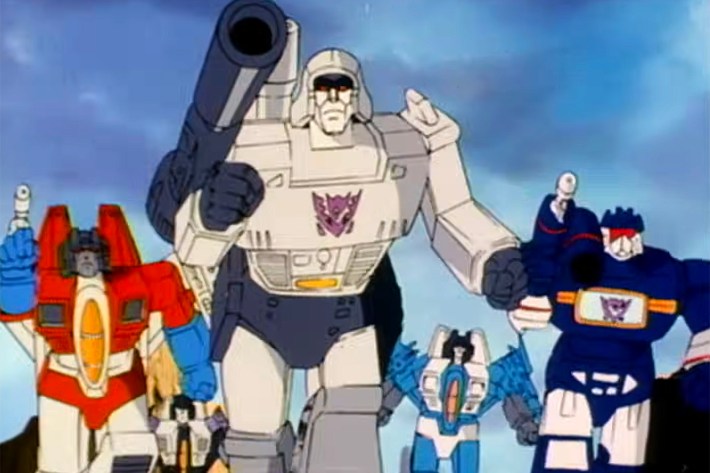
Oh, and another person who made some major contributions to Transformers characters is British comics writer Simon Furman. When they brought Transformers over to the United Kingdom, they ended up publishing it in a larger magazine format. And so, they hired Furman to write UK-exclusive comic stories to fill out each issue. To avoid conflicts with the Budiansky-written US stories, Furman focused on characters that weren't being used in the main strip. That resulted in him writing character-defining stories for many of the lesser-known Transformers, many of which never ended up in the TV series, either. And it led to him being the most prolific Transformers writer of all time, as he ended up taking over the US comic after Budiansky stopped writing it.
So, is there one "canon" continuity?
Nope! Not even close. Even when the line was first starting out in the 1980s, continuity wasn't a consideration, which is why the Marvel comic, Sunbow animated series, and the toy tech specs all featured large differences from each other.
Hell, even the Transformers kiddie story books were completely different, as you can see from this horrifying picture of Optimus Prime laughing.

How do Gobots fit into all of this?
Tonka's "Gobots" line of transforming robots was the main competitor to Transformers, and actually beat Transformers to the market by around six months. And while Gobots were popular, they haven't had the lasting cultural impact that Transformers has, so we probably won't be seeing another big-budget Gobots movie any time soon.
(I had to say "another," because it's easy to forget that the Gobots did have an actual movie that made it to theaters: 1986's Gobots: Battle of the Rock Lords. As you could probably guess, it was a flop, but on the other hand, it does have Telly Savalas playing a giant mohawked rock creature named Magmar. And I don't think you can say the same thing about 9½ Weeks.)
However, Hasbro ended up buying Tonka in 1991, which means that some of the Gobots intellectual property has been folded into Transformers. But not all, because Gobots was an import of Bandai's Machine Robo line of figures, so Hasbro doesn't have the rights to the character designs, but that's why you'll occasionally see Transformers with the same names as classic Gobots like Leader-1 and Bug Bite.
Where do I start with Transformers?
Just about anywhere you want, really. The nice thing about Transformers is, apart from a couple of the Japanese series, they're pretty much all self-contained. You don't need to have a lot of preexisting knowledge to get started, as they'll introduce you to the main characters and their goals pretty quickly. (After all, most of these were made for kids.)
And while there's no way to cover the entire franchise here, here's a rundown of the different areas you can explore, with just about any of them being a valid jumping-on point. Enjoy!
Generation 1 (US: 1984 - 1991, Japan: 1984 - 1992)
The first version of Transformers, made up of the original toy line and several similar but separate versions in different media, including…
The Transformers (1984-1987)
An 98-episode animated cartoon that ran for five seasons, the cartoon followed Optimus Prime and his team of Autobots as they are forced to leave their planet Cybertron to find energy, only to be followed by Megatron and his team of Decepticons. They end up crash-landing on Earth four million years ago, only to wake up in the present day and resume their "great war" by taking on the forms of Earth vehicles and recording equipment.
Transformers: The Movie (1986)
Taking place between seasons 2 and 3 of the cartoon, this movie was set in the distant future of 2005, and finds Cybertron under attack by the giant mechanical planet Unicron (voiced by Orson Welles!). It was also designed to get rid of a ton of characters that were no longer on toy shelves, and so features way more character deaths than you'd expect in a kid's movie. It also features (in my opinion), one of the greatest 80s soundtracks of all time, which was so good that it inspired an entire band dedicated to just playing it live, The Cybertronic Spree.
The Transformers Comic (1984-1991)
While it has the same basic premise as the Transformers cartoon, the comic went in some very different directions, especially as it gave more focus on the changing leadership of the two factions, with Optimus Prime getting blown up fairly early on (he got better) and Shockwave taking control of The Decepticons from Megatron.
The UK Transformers comic had some great stories focusing on lesser-known characters from the line, most notably introducing The Wreckers, a team of Autobot commandos, eventually led by Springer, who have a very impressive record and casualty list.
While the original toy line ended in America in 1989, it continued in Japan for another couple years. And they even made animated sequels to the original animated series, which had been translated into Japanese under the name "Fight! Super Robot Lifeform Transformers." So, technically, they're all in the same continuity, just moving further and further into the future. And many later Japanese Transformers projects still fall into this continuity, although many of them were turned into their own continuities when they were dubbed into English. That led to direct sequel series like:
Transformers: The Headmasters (1987-1988)
Replacing the U.S. series ending three-parter "The Rebirth," this one introduces the Japanese version of Headmasters, with small Cybertronian robots that can become heads for larger robot bodies, called "Transtectors." And a lot of existing characters die in this one, including Ultra Magnus, Optimus Prime (again!), Blaster, and Soundwave, although those last two got remade into new versions of themselves called Twincast and Soundblaster.
Transformers: Super-God Masterforce (1988-1989)
This one features "Pretenders," transformers who can disguise themselves as humans, aided by human kids who use battle suits and Transtectors to fight alongside them as "Headmaster Juniors."
Transformers: Victory (1989):
This one features the heroic Autobot leader Star Saber as he battles the Decepticon's Emperor of Destruction, Deathsaurus, and his minions, The Breastforce (so named because they each have a little robot animal that doubles as a breastplate).
Transformers: Zone (1990):
Only released on video as an original video animation (OVA), this one focuses on the Micromasters, the tiny micro-machine-esque Transformers releases, as the Autobot leader Dai-Atlas battles the insectoid Violen Jiger and his "Nine Great Demon Generals," who are basically the largest Decepticons of all time: Devastator, Menasor, Bruticus, Predaking, Trypticon, Abominus, King Poseidon, Overlord, and BlackZarak (aka Scorponok).
NOTE: While we now call this original era of Transformers "Generation 1" (or G1 for short), nobody called it that at the time. It was only because the next era was called …
Generation 2 (1992-1995)
After the original line had been dead for a couple years, Hasbro and Marvel tried relaunching it as "Generation 2," which included a new toy line, a new Marvel comic, and a TV series called Transformers: Generation 2, which was just the original series with disorienting CGI overlays that was described as the story being told through a "Cybernet Space Cube."
It wasn't a success, and these days it's best remembered for the eye-wateringly neon colors they gave the figures, which occasionally get used for repaints of new figures.
The Beast Era (1996 - 2001)
Hasbro was much more successful with their next relaunch, which changed up the formula by offering robots that turned into organic creatures like gorillas and dinosaurs. Of course, there was some pushback from longtime fans, which was parodied by the phrase "Trukk not Monky."
Another change was that the series didn't focus on the Autobots and Decepticons, but their descendants the Maximals and Predacons, with the main characters existing roughly 300 years after the end of the "great war." Although, the earliest toys didn't hold to this and said that these were simply classic figures like Optimus Prime and Megatron in new forms.
Notable stuff from this era includes:
Beast Wars (1996-1999)
A 52-episode CGI cartoon that followed a team of Maximals lead by Optimus Primal (no relation), who followed a team of Predacons led by Megatron (also no relation) as they crashed on a primitive planet and are forced to take on organic forms to protect themselves from the native radiation. One of the best-written animated shows of the 90s, it still has a dedicated number of fans and the characters have since been revisited (and reworked) for a number of subsequent comics, TV, and movie appearances.
Beast Machines (1999-2000)
The direct sequel to Beast Wars, this toy line and 26-episode animated series followed Optimus Primal and his Maximal team as they returned to Cybertron, only to find it ruled by Megatron and his now-mechanical forces. This series wasn't brought over to Japan, like the dubbed version of the original Beast Wars series. Instead, they got several Japan-exclusive series, like…
Beast Wars II (1998-1999)
This 43-episode traditionally animated series followed a new team of Maximals lead by Lio Convoy, who were tracking a Predacon team lead by the villainous Galvatron (again, no relation to the G1 character Galvatron) as he tried to harvest a source called "Angolmois Energy." It eventually builds to a confrontation with "Nemesis," a giant artificial planet created by Galvatron to harvest the Angolmois Energy.
Beast Wars Neo (1999)
This 35-episode series directly followed Beast Wars II. It focused on a new team of rookie Maximals lead by the wooly mammoth-themed Big Convoy. This team fought the Predacon dinosaur-combiner Magmatron, whose mission was to collect Angolmois Energy. It was eventually revealed that the Predacons wanted the Angolmois to resurrect the giant planet Unicron.
Robots in Disguise (2000-2001)
This 39-episode series started out in Japan as Transformers: Car Robots. This series brought the franchise back to Earth and followed a team of heroic robots named the "Dimensional Patrol Unit," led by firetruck-themed Fire Convoy. This team battled evil Gigatron and his "Destrongers," a subset of the Predacons. There are hints that the series was meant to be in continuity with the original G1 series, but that's still debated to this day. But when the series was brought to the US, it was renamed Robots In Disguise and the leads renamed to Optimus Prime and Megatron, making it the first real reboot of the franchise.
Dreamwave Transformers comics (2001-2005)
Dreamwave productions put out a wide range of Transformers comics during their brief time holding the license. But to me, the best thing they produced was The War Within (2002-2004).
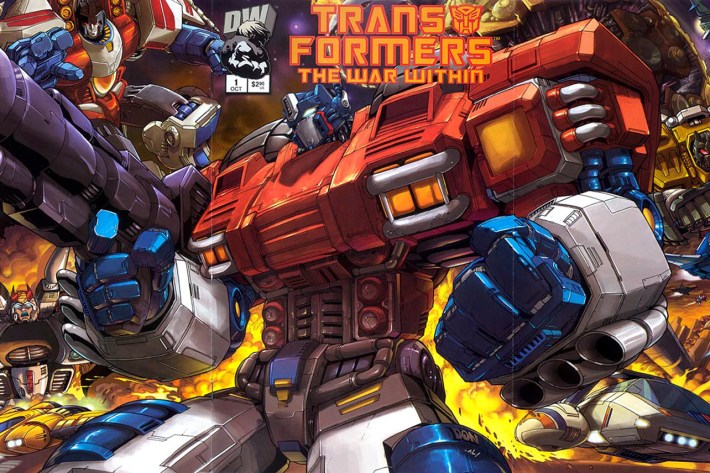
Made of three six-part miniseries (The War Within, The Dark Ages, and Age of Wrath), this prequel miniseries was set during the early days of the Great War. It was written by Simon Furman, the writer of the Marvel Transformers UK comics.
IDW's Transformers comics (2005-2022)
IDW Publishing took over the Transformers comics license after Dreamwave went out of business. They put out some great titles focusing on the time after the Great War, showing how the Autobots and Decepticons had to work together after billions of years of conflict.
Some highlights include:
Megatron Origin (2007)
A four-issue miniseries detailing Megatron's origin as an Energon Miner and rise to become leader of the Decepticons. (As you might guess, this had a large influence on the recent movie Transformers: One.)
The Transformers: More Than Meets The Eye (2012-2016)
Set after the Great War, this long-running series followed Rodimus Prime and the crew of the starship Lost Light, made up of former Autobots and Decepticons, as they travel the galaxy looking for the legendary Knights of Cybertron. This one's more character-focused than a lot of Transformers adaptations, and to me reads like a Transformers-version of a modern Star Trek series.
Last Stand of the Wreckers (2010)
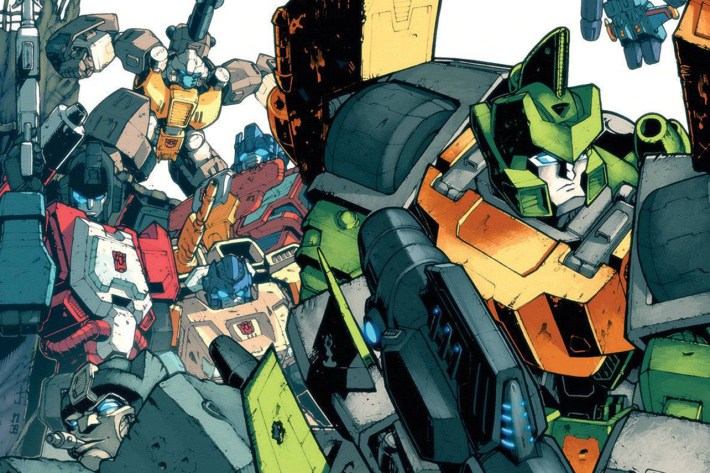
A five-issue miniseries focusing on the Autobot commando unit The Wreckers, basically the Transformer's version of The Dirty Dozen.
The Transformers film series (2007-Present)
In 2007, Transformers made the leap to the big screen again with the Michael Bay-directed Transformers. The films are their own separate continuity, just kind of taking and adapting different names and ideas from throughout the franchise for different films.
Transformers: One (2024)

Essentially a prequel to the franchise, this CGI film focuses on the early days of Orion Pax and D-16, two lower-class robots mining energon in the days before the great Cybertronian war, and the shared adventure that transformed them into Optimus Prime and Megatron.
While the trailers made it look like a goofy buddy comedy, I was surprised to find a really interesting film that did a great job of making a friendship between the two legendary adversaries believable. It's also a pretty good jumping on point for the franchise, as it essentially works as backstory for just about any version of the story that features Optimus and Megatron.
21st Century Transformers Animated Series (2002-Present)
The Unicron trilogy (2002-2006)
This was a series of three directly linked CGI-animated TV series, Armada, Energon, and Cybertron, which told the story of Autobots and Decepticons coming to Earth to battle over Mini-Cons, little transforming robots that could link to the larger robots to unlock new powers. They're notable for being the first media that was made as a direct partnership between the US and Japan, as all previous shows had been created for one market and simply dubbed over for the other.
Transformers: Animated (2007-2010)
This animated reboot finds Optimus and Megatron battling on Earth again, with the big change being that Optimus isn't the leader of the Autobots, just a small repair team. The show has a much more cartoony look than anything else in the franchise, but ended up winning over a lot of fans with its balance of humor and willingness to play with (and explore) bits of franchise lore. I'd definitely recommend it as a great jumping on point, especially if you're a fan of goofy fun.
Transformers: Prime (2010-2013)
This CGI-animated series sees Prime and a team of Autobots battling Megatron on Earth, after the Decepticon leader discovers the energy source of "Dark Energon." It takes some design cues from live-action movies and featured some great writing that eventually earned it nine daytime Emmy awards. If you're looking for a long-form series with ongoing, interweaving storylines, I'd recommend you start here.
The War for Cybertron trilogy (2020-2021)
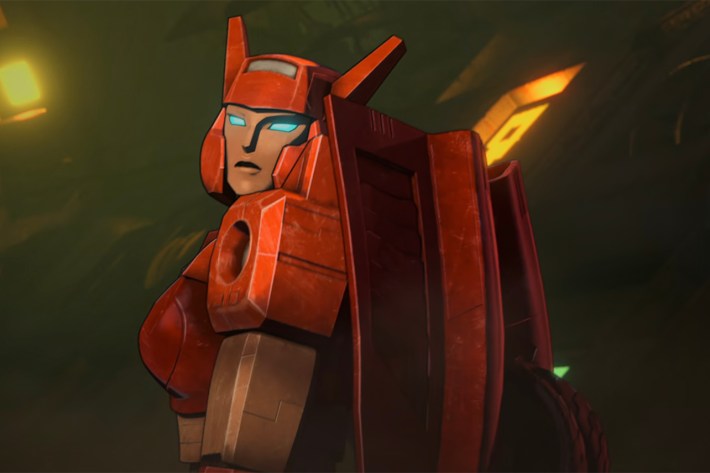
This one is three CGI-animated series that ran on Netflix, and are basically one show with three seasons. War For Cybertron: Siege takes place on Cybertron, with Optimus Prime and his Autobots on the verge of losing the great war, while Earthrise and Kingdom follow their adventures traveling the galaxy to find the life-giving Allspark. If you're looking for a condensed overview of the Transformers franchise that you can quickly binge, this is probably the best, as they basically managed to cram a lot of beats from the whole franchise into one storyline.
Did I miss some stuff? Definitely! Including a bunch of kid-focused series like Transformers: Rescue Bots and Transformers: Earthrise. But I hope this gives you a starting off point for your own Transformers adventures. Enjoy!
